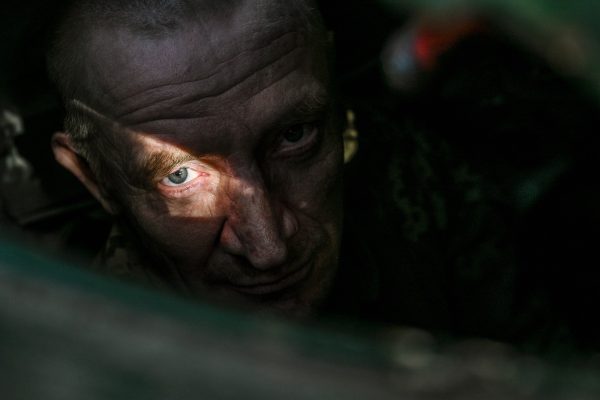Russia has intensified its attacks against Ukraine’s electricity network over the past two months in a bid to impose costs on the civilian population. As a result, it has made “frontline soldiers” of the emergency services dealing with damage and casualties caused by Russian strikes, but also the technicians and workers of the country’s electricity companies. As a result, Ukraine is, quite literally, fighting a war against the dark and the cold.
The Kremlin’s strategy is clear: forced into a defensive war after dreams of a three-day Blitzkrieg-style invasion evaporated, it has decided to pressure Ukraine by having its citizens freeze during the winter. This tactical and cynical objective aims to give Russia strategic options; either to force the Kyiv government to negotiate, or to buy time before resuming operations.
Domestically, Moscow’s winter strategy also aims to pre-emptively quell rising criticism of the failed “special operation,” by making sure Ukrainian civilians are as miserable as possible, and offering Russian propagandists something to gloat about on TV. The nightmarish “cherry on top” of the cynical Russian strategy is the possibility that, as the Ukrainian electricity grid continues to fail, additional civilians will be forced to flee, adding to the economic weight currently shouldered by neighboring countries (and reminiscent of the tactics Vladimir Putin used in Syria.) The missile strikes also represent an indirect blow to Europe: Before October 10 (when the campaign began) Ukraine was actually exporting electricity to Europe. After October 10, the attacks have disrupted supply not only in Ukraine but also in neighboring Moldova, whose government is another Kremlin target.
In other words, Russia has shifted from joint targeting of Ukrainian soldiers and civilians to a more focused winter war on non-combatants in their homes. The new strategy was heralded with the strikes of October 10 and has been followed by a further seven large-scale attacks, specifically aimed at the Ukrainian electricity and water network, at a rate of around one a week. According to an official from the state-owned electricity company, Ukrenergo, around 1,000 missiles and drones have been aimed launched at energy-related infrastructure. And while hundreds of those have been intercepted by Ukrainian air defenses, including new and advanced Western anti-missile systems, no thermal or hydropower plant in the country has been left untouched by Russian strikes. For almost two months now, the country has been running with a 15% to 20% energy deficit, forcing it to adapt and use daily rolling and emergency power cuts.
The Russian attacks have focused both on electrical production (power plants), but also on the distribution network (transmission lines), with an estimated 50% of the network being affected to a degree by the Russian onslaught. Electricity cannot be stored, so this is a game of constant balance between production and consumption, with little-to-no safety net. Piling on those physical attacks, Ukraine has also suffered daily cyberattacks, whose goal is to create bottlenecks by targeting key transmitters and decreasing Ukraine’s ability to compensate for the failure of some of its plants by using others. Every day, Ukrainian technicians have to painstakingly repair both to maintain a steady supply of electricity across the country.
Ukrainian electricity production is also heavily dependent upon a limited number of plants, a legacy of its Soviet heritage, making it an easier target than a more dispersed network. At the same time, an estimated half of Ukraine’s electricity production is supplied by nuclear plants: Hitting those plants would represent a significant escalation, and carry with it the risk of nuclear fallout.
But even without hitting those plants, Russia has been able to affect nuclear-based production: on November 23, the scope of the damage to the country’s electricity was so broad that all of the nuclear power plants were shut off. This automatic safety mechanism aims to avoid accidents, as nuclear power plants need a stable supply of electricity from the outside to power maintenance systems and maintain the cores below a certain temperature.
On November 23, only one of Ukraine’s nuclear plants managed a very tricky maneuver called “islanding”, which consists in using one of the cores to power the whole plant (creating an “island” in the sense that the plant no longer needs to be reconnected to the network.) This maneuver also enables a relatively quick resumption of production. Yet other reactors did not manage (or perhaps even try) to apply this process. Shutdown reactors take time to switch back on, particularly if the reactors are forced into a “cold stop”, during which pumps used by the plants are no longer warm.
These approaches — islanding or automatically switching off and then resuming operations —carry with them their own sets of risks, particularly if they are repeated time and time again. In other words, Russia is literally playing with (nuclear fire) to salvage its failed “special operation”.
The fact that Ukraine has managed to keep the lights on after seven waves of missile and drone strikes is an exploit in itself and a testament to the ingenuity of Ukrainian technicians. Electricity grids are not built to resist targeted waves of attacks. Ukraine has been forced into a race against time to repair energy infrastructure before Russia unleashes the next wave of drones and missiles.
Unfortunately, Ukraine is only at the beginning of a long and arduous battle this winter, as temperatures are set to drop even further during the coming weeks. The head of the parliamentary commission on energy and housing warned that Ukraine would not be able to repair every damaged energy facility this winter, suggesting that the running deficit will continue to affect the grid, and continue to cause planned and emergency power cuts. The November 23 strike already led to longer cuts, and higher deficits, showing that despite Ukraine’s best efforts, this is not a battle it can truly win.
This does not mean that the Kremlin’s winter blitz against Ukraine’s energy infrastructure is a winning strategy. President Zelenskyy’s Churchillian speech a few weeks ago highlighted that Ukrainians would prefer life “without electricity” as long as that meant living “without you [i.e. Russia].” But this does not mean that the Russian winter strategy should be ignored.
For the sake of Ukrainian civilians, who are now even more likely to bear the consequences of the war, and for the sake of judging those responsible for what amounts to war crimes, Ukraine’s emerging war against the dark and Moscow’s effort to switch off the lights in an entire country should be resisted, even as Ukraine is assisted with urgently needed weapons and technical help by the West.
Michael Horowitz is a geopolitical and conflict analyst, as well as the head of the analyst team at Le Beck International. As such he and his team advise multiple companies and NGOs operating in Ukraine following Russia’s invasions. Michael’s commentary and analysis can also be found in multiple international and regional outlets, including major publications like The Washington Post, The Wall Street Journal, BBC, NBC, AP, and elsewhere.
Europe’s Edge is CEPA’s online journal covering critical topics on the foreign policy docket across Europe and North America. All opinions are those of the author and do not necessarily represent the position or views of the institutions they represent or the Center for European Policy Analysis.





